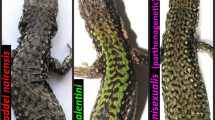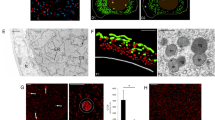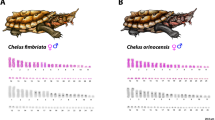Abstract
IN the grasshoppers and some other animals, nodes have been demonstrated in the bivalents, at the late prophase, by Sutton, McClung, Robertson, Wenrich, Janssens, etc. One of the Orthoptera, Chortophaga sp., has eleven bivalents and one univalent (X chromosome) at the late prophase of the maturation divisions in the spermatocytes. These are well shown in ironacetocarmine preparations. The writer found that the six largest bivalents showed 28 cases with one node to 19 with two nodes. The smallest five bivalents had only one node each. At each node it was obvious, as had been previously demonstrated by others, that one chromatid from each homologue seemed to pass to the other side, while the other chromatid remained on the same side.
This is a preview of subscription content, access via your institution
Access options
Subscribe to this journal
Receive 51 print issues and online access
$199.00 per year
only $3.90 per issue
Buy this article
- Purchase on Springer Link
- Instant access to full article PDF
Prices may be subject to local taxes which are calculated during checkout
Similar content being viewed by others
Author information
Authors and Affiliations
Rights and permissions
About this article
Cite this article
BELLING, J. The Nodes at the Reduction Division in Bivalents of Hyacinthus. Nature 119, 527–528 (1927). https://doi.org/10.1038/119527c0
Issue Date:
DOI: https://doi.org/10.1038/119527c0
Comments
By submitting a comment you agree to abide by our Terms and Community Guidelines. If you find something abusive or that does not comply with our terms or guidelines please flag it as inappropriate.



